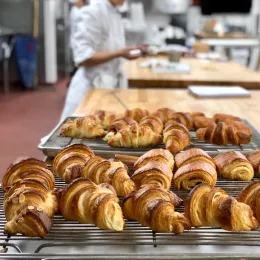Herbs are one of the most versatile ingredients that chefs and culinary students can use, providing big doses of flavor in small packages.
Students at the Institute of Culinary Education have access to a hydroponic garden, where many varieties of herbs may be snipped directly for maximum freshness.
“Herbs belong everywhere,” Chef-Instructor Ann Ziata says. “Yogurt sauces, salad dressings, and pestos add a fantastic freshness to so many dishes thanks to their generous usage of herbs. Anything that gets roasted in the oven will gain a lovely, savory aroma with the addition of a few sage leaves and rosemary sprigs.” Even baked goods such as certain breads or scones can also benefit from the intense flavor of herbs.
Related: The Hydroponic Garden
Not all herbs are created equal, however, and have a variety of different uses depending on their biological structure and flavor profile.

Here, we dive deeper into what qualifies as an herb, how different herbs are used in culinary preparations, and take a closer look at some of the most popular herbs used in cooking.
What Are Herbs?
The difference between that which we call herbs and that which we call spices can be nuanced, especially because variations can come from different parts of the same plant. Cilantro, for example, is understood in this country to be the leaf part of a certain plant, whereas ground coriander comes from the seed part of the same plant. In different parts of the world, however, coriander may refer to both the leaves and seeds.
"An herb is any leaf of a plant that is used primarily for its pronounced flavor,” Chef Ann says.
Herbs get their flavors from a high concentration of volatile aromatic compounds in the form of essential oils, which differentiates them from other edible leaves such as lettuces.
Types of Herbs and Their Culinary Uses
While the herb category is mainly comprised of leaves whose aromas and flavors are especially powerful, herbs can further be broken down into two major categories, which also governs their culinary uses.
“We generally sort herbs into two categories: soft and woody,” says Chef Ann. “Soft herbs have delicate stems that can be eaten, and woody herbs have tougher stems that are typically not eaten. As with most culinary ingredients, it’s more of a spectrum than a black and white system.”
Consider the difference between soft herbs like dill and basil, where the entire plant can be chopped and easily consumed, and rosemary, whose leaves are separated from the stems, as the woody stems aren’t meant for consumption.
Traditional Flavor Profiles: French Herbs and Spices
Whether or not the stem can be consumed plays into how different herbs can function in recipes and culinary preparations.
How to Cook with Woody Herbs
“Woody herbs can be picked, stems discarded, and then chopped finely,” says Chef Ann, “or they can be used whole in the dish and removed later. Because they are fibrous and strong, they are added early on in the cooking process to give the herb time to soften and release its flavor.”
Herbs such as rosemary and thyme, for example, are often bound into a sachet, which may be used in braises or sautés to aromatize a dish while it cooks. The sachet is then removed prior to serving. Even if they are removed and chopped, the leaves of woody herbs also tend to be sturdier than their soft herb counterparts, and are appropriate to add early in the cooking process, or to use in high heat cooking.
How to Cook with Soft Herbs
As their name implies, soft herbs are more delicate in character, and aren’t necessarily suited for the same treatment as woody herbs.
“Herbs, like basil, cilantro, and dill are lightly chopped and then added toward the end of cooking,” Chef Ann says. “Over-mincing and overcooking will cause them to bruise, turning them a drab green and causing them to taste more bitter. Fresh sprigs can also be kept whole for infusing into light broths and pickling brines."
Soft herbs are typically more suitable for raw preparations than woody herbs, such as in pestos, dressings, or even added as additional greens in salads. They are also often used as garnishes.
Fresh Herbs Versus Dried Herbs
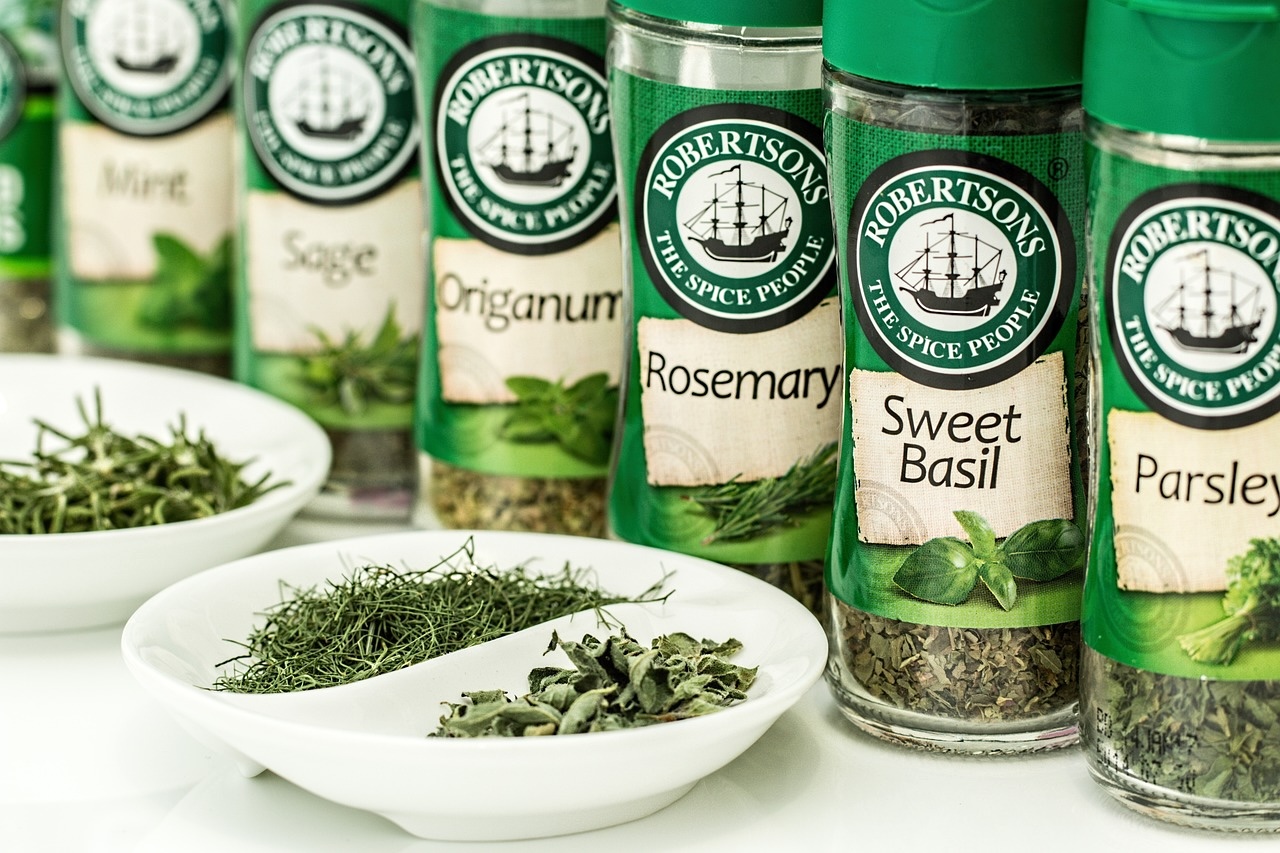
The aromatic leaves of those plants which we refer to as herbs may also be dried, minced, and stored for later usage. (Good news for those of us who don’t have access to an herb garden, or notice a lack of fresh grocery store herbs during the winter months.)
Dried herbs are also used differently than their fresh counterparts, regardless of whether you’re using soft herbs or woody herbs.
“Dried herbs are more concentrated, so you can usually substitute one teaspoon of dried herbs for every tablespoon of fresh chopped herbs. The flavor of dried herbs is pretty dormant and needs time and heat to bloom again,” Chef Ann says.
According to Chef Ann, oil or cooking fat will also help intensify the flavor of dried herbs.
“You can add them early on in the cooking process, usually right after sweating the other, larger aromatic ingredients like onions and garlic,” she says.
Because of their naturally sturdy leaves, woody herbs will tend to have more pronounced flavor in their dried form than soft herbs.
You can usually substitute one teaspoon of dried herbs for every tablespoon of fresh chopped herbs.
Common Herbs for Cooking
There are dozens of different types of herbs, many of which have very specific uses or are most commonly found in certain cultural cuisines. Here are some of the most common types of herbs used in cooking.
Basil
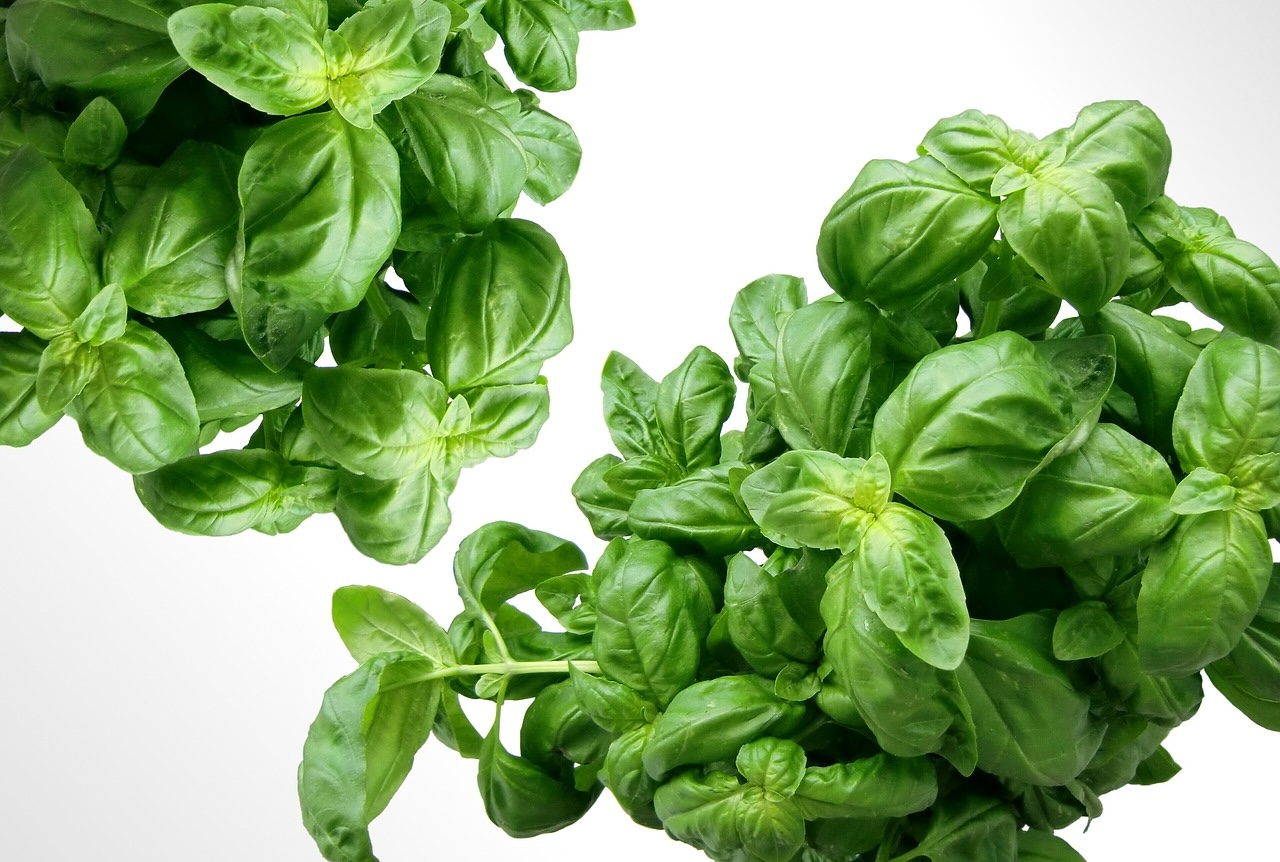
Basil is a soft herb that belongs to the mint family. Several varieties of basil are used in cooking such as sweet basil, Thai basil, and opal basil. Typically used in Italian and Southeast Asian cuisine, basil has a pungent, slightly spicy character that is reminiscent of fennel or licorice.
Bay Leaf
Bay leaves come from many varieties of laurel trees, and are unique herbs. Unlike most herbs, bay leaves themselves aren’t meant for consumption. Bay leaves are savory and floral, and are typically added whole, whether fresh or dried, to sauces or braises and removed before serving.
Chervil
Chervil is one of the most important herbs in French cuisine, as one part of an herb blend known as “fine herbs” which consists of parsley, chervil, chives, and tarragon, used to season everything. These "fine herbs" are often found seasoning omelets, potatoes, vegetables, poultry and seafood. A relative of parsley, chervil has delicate, lacy leaves. Less pungent than other soft herbs, chervil’s flavor has been likened to licorice or anise.
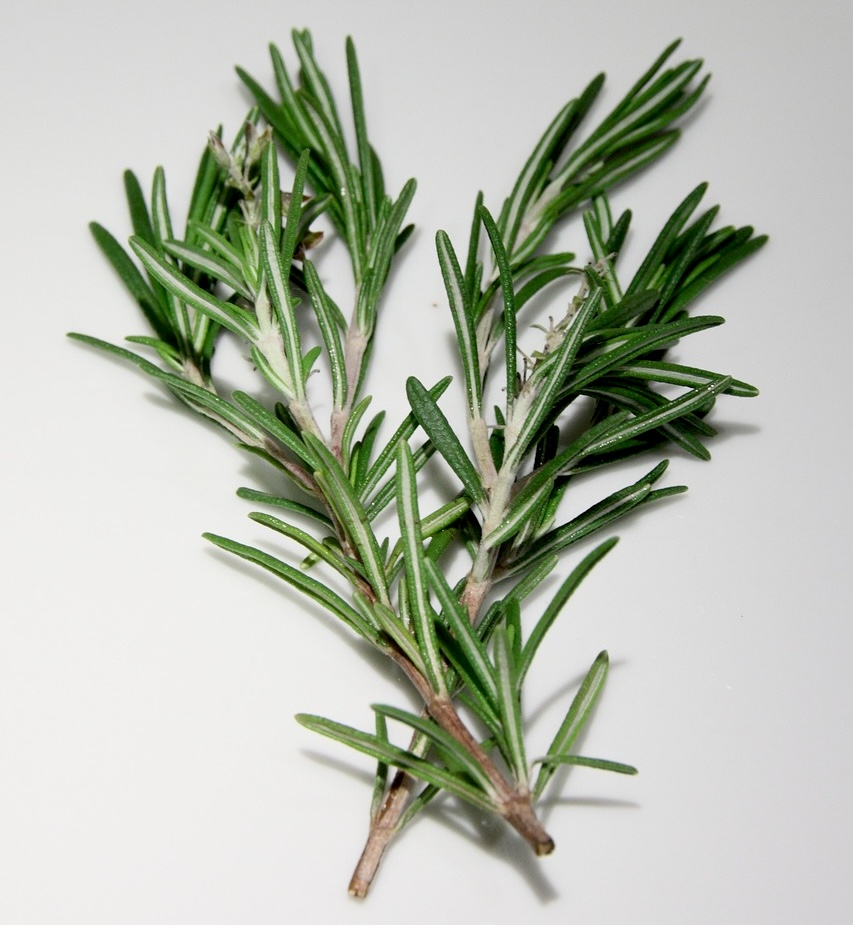
Rosemary
Rosemary is actually an evergreen shrub with woody stems. Rosemary's leaves are some of the most bold and aromatic in the field of herbs. Native to the Mediterranean, it has wide culinary uses, and its complex, woodsy and earthy flavor is often used for various meats, potatoes, and stuffings.
Cilantro
Strong in flavor, with an almost tangy or citrus aroma, cilantro is a soft herb that is used in many cuisines such as Mexican, Indian, and Southeast Asian. Cilantro, it must be said, is also one of the most polarizing herbs: people with a specific genetic code will often find its flavor to be soapy and off-putting.
Dill
Dill is a soft herb whose flavor is very dynamic when fresh, but much more subtle when dried, and has been described as grassy and lemony. Dill is most commonly used in Central and Northern Europe and the Baltics, where it is used to flavor seafood, potatoes, and vegetables, and is also common in various pickled preparations.
Mint
Mint is a soft herb with many variations, which has a warm, sweet flavor and a cool aftertaste. Mint is extremely versatile in culinary preparations. It is frequently served as a jelly with lamb, in sauces, as a tea, in dessert, and even in cocktails.
Oregano
Oregano is a woody plant with stems that may be soft enough (when young) for consumption. Unlike herbs such as dill, oregano’s leaves are more intense when dried than when fresh. Oregano is peppery, pungent, and slightly bitter, and is used widely in Italian, Greek, Turkish, Spanish, and Latin American cuisine.
Sage

Savory and peppery in nature, sage is a strong-flavored, woody herb, whose culinary uses are similar to those of rosemary. Sage’s distinctive, almost fuzzy leaves are often used with meats, sausages, beans, vegetables, pastas, and in sauces.
Parsley
Parsley is a soft herb with lacy leaves that is frequently used for garnish, though it also has many culinary uses. Parsley is widely used in Middle Eastern, Mediterranean, and French cuisine, and is often used in sauces, or to season potatoes, rice, vegetables, and a wide variety of proteins. Parsley’s flavor is fresh and lightly bitter, with notes of pepper and earthiness.
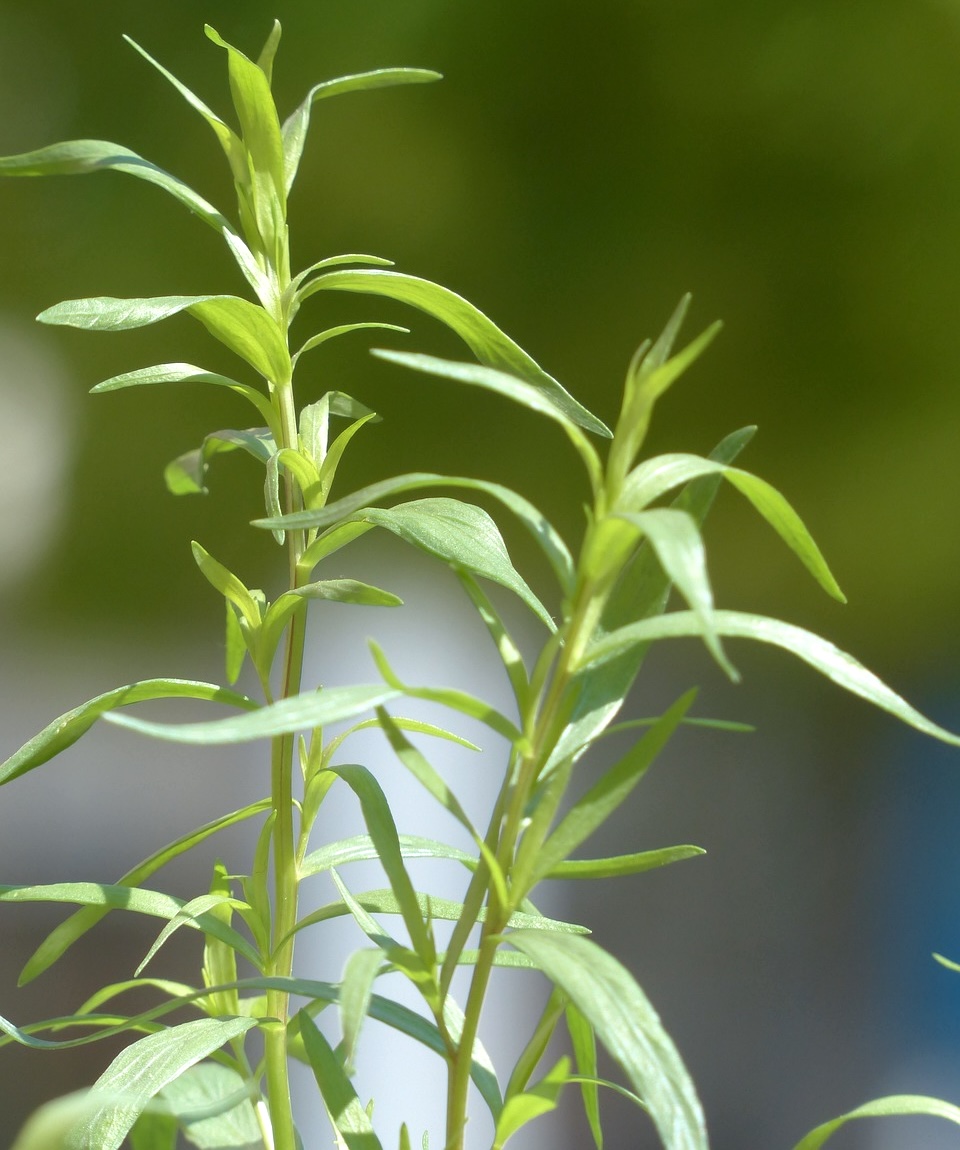
Tarragon
Similar to basil and chervil, tarragon has a flavor profile similar to anise, with floral notes, and can be used in both sweet and savory preparations. Its elongated, tender leaves are used throughout various Northern hemisphere cuisines, such as Georgian, Syrian, and French, where it is one of the herbs used in the “fine herbs” blend. Tarragon is frequently paired with chicken, fish, eggs, and cheese.
Thyme
Thyme is a Mediterranean, woody herb with a spicy, citrusy and peppery flavor. Its leaves are among the smallest of any herb, and while they may be picked and chopped, thyme is frequently used in an herb sachet to aromatize sauces, braises, soups, and stews.






